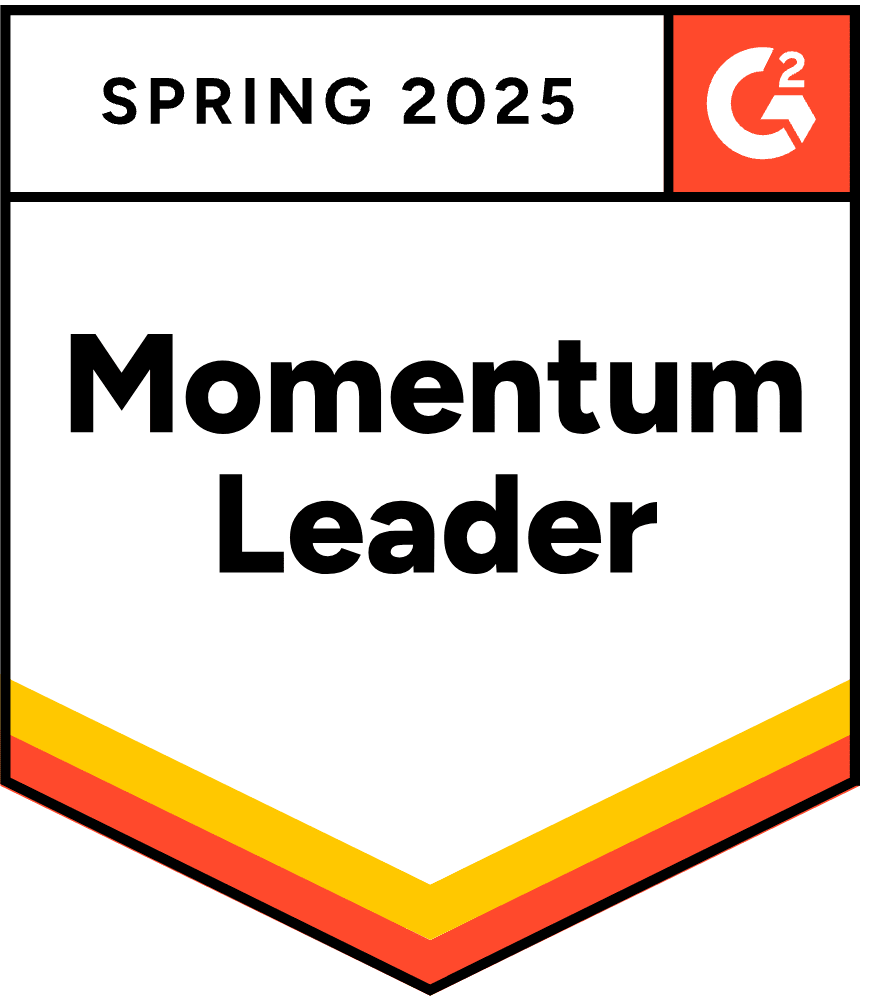From multinational corporations expanding their market reach to startups building international partnerships, the ability to communicate in diverse languages has evolved from a desirable skill to a strategic imperative. This guide delves into the myriad benefits of corporate language learning, illustrating how it enhances employee engagement, streamlines global operations, fosters inclusive work environments, and propels companies toward sustainable growth.
Explore our in-depth exploration of various language learning approaches tailored to corporate settings, from e-learning platforms and blended learning solutions to immersive language programs. Uncover firsthand accounts from industry leaders who have successfully integrated language learning initiatives, resulting in enhanced cross-border collaborations, enriched customer relationships, and increased market competitiveness.
Whether you’re aiming to bolster your organization’s global footprint, enhance employee development programs, or simply understand how language proficiency can drive your company forward, this guide shows you all the opportunities that corporate language learning presents. And if you want to take it a step further: We’ve also prepared a free eBook to help you get started with language learning in your company!
Table of Contents
- Why Is It Important to Learn Another Language?
- 1. Cognitive Flexibility
- 2. Critical Thinking
- 3. Cross-Cultural Understanding
- 4. Career Opportunities
- 5. Personal Growth
- 6. Social Benefits
- 7. Communication
- 8. Innovation in Multilingual Settings
- 9. Enriching the Idea Pool
- 10. Global Market Opportunities
- 11. Leadership in a Globalized World
- Curious about Babbel for Business?
- What Is the Best Way to Learn a Language?
- How to Find the Best Language Learning Program for Your Company
- Why Babbel Is the Best Language Learning Solution for Your Company
- How to Learn a Language Effectively at Work
- How Long Does It Take to Learn a Language?
Transform your workforce with effective language training
Discover how tailored corporate language learning programs can enhance communication and collaboration in your organization.
Why Is It Important to Learn Another Language?
Learning another language enables effective interactions and connections with people from diverse backgrounds, while also opening up new opportunities for personal and professional growth. Language learning can contribute to the creation of an innovative culture within an organization in several ways:
1. Cognitive Flexibility
Learning a new language is more than just acquiring vocabulary and grammar; it profoundly impacts cognitive function. Learning new languages exercises the brain, enhancing cognitive flexibility and adaptability. One of the most significant benefits is improved memory. Studies have shown that language learners often experience enhanced memory capabilities, as the process of memorizing new words and phrases exercises the brain much like a workout for the body. This mental workout strengthens neural connections, making it easier to recall information in other areas of life. Individuals who engage in language learning often develop the ability to think creatively, solve problems from different angles, and embrace new perspectives, which are essential for innovation.
2. Critical Thinking
Bilingualism fosters better problem-solving skills. When navigating multiple languages, individuals develop a heightened ability to think critically and approach challenges from various angles. This cognitive flexibility allows bilinguals to analyze situations more effectively, leading to innovative solutions. Bilingual individuals often excel in tasks that require creative thinking and complex reasoning, making them adept problem solvers in both academic and professional settings.
3. Cross-Cultural Understanding
Learning a new language is a gateway to understanding and appreciating diverse cultures and perspectives. When you immerse yourself in a language, you also delve into the customs, traditions, and values that shape the lives of its speakers. This cultural insight fosters empathy and broadens your worldview, allowing you to see the world through different lenses. By understanding the nuances of a language, you gain a deeper appreciation for the richness and diversity of human experiences.
Language learning also plays a crucial role in breaking down stereotypes and cultural barriers. When we engage with another language, we often confront our preconceptions and biases. This process encourages open-mindedness and fosters genuine connections with people from different backgrounds. By learning to communicate in someone else’s language, we demonstrate respect and willingness to understand their culture, which can significantly reduce prejudice and promote inclusivity. Language becomes a bridge that connects us, helping to dissolve misconceptions and build meaningful relationships.
Traveling is another area where language skills can profoundly enrich experiences. Speaking the language not only enhances your travel experience but also opens doors to authentic interactions that might otherwise remain closed. You can navigate new environments with confidence, ask for recommendations, and truly immerse yourself in the culture.
4. Career Opportunities
The demand for bilingual employees continues to rise across various industries, including healthcare, technology, finance, and customer service. Employers are increasingly recognizing that language skills can improve communication with clients and colleagues, leading to better collaboration and customer satisfaction. As businesses expand into global markets, the need for employees who can bridge language gaps becomes essential, making bilingualism a sought-after qualification in the job market.
Language skills also play a crucial role in global networking. In an era where professional relationships often extend beyond borders, being able to communicate in another language can open doors to new opportunities. Whether attending international conferences, engaging with clients from different countries, or collaborating with colleagues around the world, language proficiency allows you to connect on a deeper level. This ability to build relationships across cultures can lead to valuable partnerships, mentorships, and career advancement that might not be accessible otherwise.
Being multilingual provides a competitive advantage in the job application process. In a pool of candidates with similar qualifications, those who can demonstrate language proficiency stand out. Employers often view multilingualism as a sign of adaptability, cultural awareness, and strong communication skills—qualities that are highly valued in any role. By highlighting your language abilities on your resume and during interviews, you position yourself as a versatile candidate who can contribute to a diverse workplace and navigate the complexities of a globalized economy.
5. Personal Growth
Learning a new language contributes to personal growth, starting with a boost in confidence. Mastering a new language requires dedication and perseverance, and each milestone achieved—whether it’s holding a conversation, reading a book, or writing an email—builds self-esteem. As you become more proficient, you gain the courage to step outside your comfort zone, engage with others, and express yourself in ways you may not have thought possible. This newfound confidence extends beyond language skills; it permeates various aspects of life, empowering you to tackle challenges with a positive mindset.
Language learning embodies the spirit of lifelong learning. In a rapidly changing world, the importance of continual education cannot be overstated. By committing to learn a new language, you cultivate a growth mindset that encourages curiosity and adaptability. This journey of discovery not only enriches your intellectual capabilities but also prepares you for future challenges, making you more resilient in the face of change. Embracing the process of language learning can inspire you to pursue other interests and skills, reinforcing the idea that learning is a lifelong endeavor.
Additionally, knowing another language can help forge meaningful connections with speakers of that language. Language is a powerful tool for building relationships, as it allows for authentic communication and understanding. Whether it’s making friends while traveling, connecting with colleagues from diverse backgrounds, or engaging with community members, speaking their language fosters trust and camaraderie. These relationships can lead to enriching experiences, shared knowledge, and a deeper appreciation for different cultures.
6. Social Benefits
Language skills enable individuals to engage more deeply with diverse communities. When you learn a new language, you gain the ability to communicate with people from different backgrounds, fostering inclusivity and understanding. This engagement can lead to meaningful interactions, whether in local neighborhoods, cultural events, or community organizations. By speaking the language of a community, you not only break down barriers but also show respect for its culture, which can enhance collaboration and create a sense of belonging. As a result, language becomes a bridge that connects you to others, enriching your social experiences and expanding your worldview.
In multicultural families, language plays a vital role in maintaining family ties and heritage. For individuals who grow up in bilingual households or who have relatives speaking different languages, the ability to communicate in those languages strengthens familial bonds. It allows for the sharing of traditions, stories, and values, ensuring that cultural legacies are passed down through generations. Speaking the family’s native language can also help younger members feel connected to their roots, fostering a sense of identity and belonging that is crucial in today’s globalized world.
7. Communication
Language barriers can stifle the flow of ideas and collaboration. Learning a language enhances overall communication skills, which are essential in both personal and professional contexts. As you acquire a new language, you develop a greater awareness of how language works—its nuances, idioms, and cultural references. This heightened sensitivity translates into improved listening skills, empathy, and the ability to articulate thoughts more clearly.
Additionally, navigating conversations in another language cultivates patience and adaptability, as you learn to express yourself in diverse ways. These enhanced social skills not only benefit your interactions in the new language but also enrich your communication in your native language, making you a more effective communicator overall.
When employees can converse in a language that reflects the backgrounds of their colleagues or clients, it breaks down barriers and builds trust. This ability to communicate effectively leads to improved collaboration, as team members feel more comfortable sharing ideas and feedback. Moreover, it enhances customer relations, allowing businesses to connect with clients in their preferred language, which can result in better service and increased loyalty.
Additionally, multilingual employees are often seen as valuable assets within organizations. They can bridge communication gaps, translating not just words but also cultural nuances that can impact business negotiations and client relationships. This cultural competency can lead to more successful partnerships and a deeper understanding of market needs, ultimately driving business growth.
8. Innovation in Multilingual Settings
Multilingual settings bring together individuals with varied backgrounds, perspectives, and experiences, which can significantly enhance creativity and problem-solving. In organizations with multilingual teams or diverse customer bases, language skills enable employees to gather insights, provide tailored solutions, and innovate products or services that cater to specific linguistic and cultural preferences.
When team members speak different languages, they also bring distinct cultural viewpoints that can lead to innovative ideas and solutions. This diversity of thought encourages brainstorming sessions where unique approaches to challenges can emerge. Teams with diverse linguistic backgrounds are often more adept at thinking outside the box, as they can draw from a broader range of experiences and knowledge.
Multilingualism also enhances collaboration on global projects. In a world where businesses increasingly operate across borders, having employees who can communicate in multiple languages enables seamless collaboration with international partners. This capability not only facilitates the exchange of ideas but also allows for a deeper understanding of global market trends and customer needs. Teams can adapt products and services to meet the demands of different cultures, leading to more innovative and successful offerings.
Additionally, multilingual employees often possess strong intercultural communication skills, which are essential for navigating complex global challenges. They can bridge gaps between teams from different regions, ensuring that ideas are conveyed accurately and respectfully. This ability to mediate discussions and foster understanding can lead to more effective collaboration and ultimately drive innovation.
9. Enriching the Idea Pool
Multilingual individuals bring a broader range of experiences, ideas, and perspectives to the table. This diversity enriches brainstorming sessions and collaborative efforts, fueling the generation of innovative concepts.
10. Global Market Opportunities
For businesses, language skills open doors to international markets. Innovation can arise from adapting products, services, and strategies to meet the needs and preferences of different linguistic and cultural communities.
11. Leadership in a Globalized World
In a globalized economy, leaders who understand and appreciate different languages and cultures are better positioned to guide their organizations toward international opportunities and innovative partnerships.
Curious about Babbel for Business?
Book a demo now and let us show you how our platform can transform your business.
What Is the Best Way to Learn a Language?
The optimal approach to language learning involves creating a dedicated language-learning culture within the organization and implementing blended learning as the solution. By fostering an environment that encourages continuous language development and combining traditional classroom instruction with online resources, employees can engage in immersive, flexible, and effective language acquisition, leading to enhanced communication skills and intercultural competence.
Create a Language Learning Culture
A language learning culture is essential for companies as it promotes effective cross-cultural communication, strengthens employee engagement, and enhances adaptability in an increasingly globalized business landscape. It fosters a diverse and inclusive workplace, empowers employees with valuable skills, and positions the company for success in international markets, ultimately driving innovation, collaboration, and long-term growth.
Invest in Blended Learning
Investing in corporate language training using a blended learning approach is crucial for companies as it combines the benefits of traditional classroom instruction with the flexibility and accessibility of online platforms. This approach allows employees to learn at their own pace and convenience, fostering a culture of continuous learning while catering to diverse learning styles.
Blended learning equips companies with a versatile and cost-effective solution to develop essential skills, enhance communication, and adapt to evolving business demands, ultimately contributing to improved employee performance, engagement, and organizational success.
This is precisely why Babbel for Business offers a range of learning options using a blended learning approach. For companies seeking to enhance both language skills and team cohesion, the Babbel Live solution provides a comprehensive curriculum, offering adjustable group and 1:1 lessons that align with specific team requirements.
Babbel’s language learning platform encompasses curricula spanning 14 languages, focusing on business-centric themes. It additionally provides access to certified instructors and progress tracking data, ensuring a comprehensive and customized learning experience.
Discover how our solutions cater to different industries!
Visit our Industry page to learn how we can meet your specific needs.
How to Find the Best Language Learning Program for Your Company
If you’ve recently decided to implement a language learning solution in your organization’s workflow or are interested in doing so, creating a roadmap is vital to ensure that your team gets off to a good start. Here at Babbel, we’re experts when it comes to introducing companies and their employees to the limitless possibilities of multilingualism, and from our experience, putting a learning plan in place is the best way to get set up for success.
In order to find the type of program that will work for your organization, you’ll need to create a plan that looks at the big picture of what you hope to achieve. We’ve put together some guidelines to help managers do exactly this. The next steps outlined below will help the leader of your language learning program put together a plan that will launch your team into successful learning, and ensure that they remain on track along the way.
1. Assess Your Company’s Language Learning Needs
To find the right language course for your business, the first step is to evaluate exactly what you need: Are you looking for a course that concentrates on learning one specific language? Or for a course that covers as many languages as possible? What sort of course content should be covered? Which technical requirements have to be in place?
Before you start your research, you should know all of your company’s requirements for a language course. You can start by answering the following questions:
- Should the course be online, in person, or perhaps a mixture of both, called a blended learning model?
- Which topics and themes are especially relevant for your employees?
- Should the course content cover only business-related themes or expand to other areas?
- How important is it to you that your language course uses the latest pedagogical concepts?
- What sort of devices (for online courses) should be compatible with the course?
- Do existing learning management systems (LMS) have to be taken into account? Do these interfaces have to be made available to the new providers?
2. Define Your Strategy
Once you’ve gathered information from both the program leader and participants, you should choose a learning strategy that prioritizes your team’s learning objectives and empowers your employees with course content related to their everyday lives and workflows. When deciding, keep in mind that the best language learning strategies give employees the tools and support they need to succeed in a format that doesn’t negatively impact productivity.
3. Find the Right Product
Finding the type of language training that’s right for your company can be simple if you’re provided with the right options.
We have defined three primary learning models that help assign the needs of your organization to the right product for your employees. Our comprehensive, hands-on guide to language learning in your company provides a detailed breakdown of these models and helps you identify where your needs lie within the Babbel framework.
4. Evaluate Your Progress
Evaluation is a key part of ensuring the success (and longevity) of any language learning program. Keeping track of how participants are performing and how well they are interacting with the content will allow your management team to gauge the effectiveness of the plan you’ve put in place and to tweak it as needed.
Why Babbel Is the Best Language Learning Solution for Your Company
Babbel stands out as the premier language learning app for companies with its blend of comprehensive language courses, adaptable learning paths, and interactive content tailored to business needs. Its effective combination of app-based lessons and real-time instruction, along with personalized progress tracking, ensures efficient skill development and enhanced communication capabilities among employees, making it the optimal choice for fostering language proficiency within corporate environments.
Overcome Business Challenges
There are common business challenges that companies face before implementing a language learning solution:
- Internal and external communication barriers
- low engagement and motivation
- lack of flexibility
- slow progress
Babbel is here to help you overcome these business challenges! Our digital language learning platform offers personalized solutions, speech recognition software, group and one-on-one lessons, industry-specific content, and flexibility to overcome these challenges and enhance language skills within the workforce.
Achieve Your Language Learning Goals
There are five ways in which Babbel’s blended learning solutions can help companies achieve their language learning goals:
- By breaking down internal language barriers at a personalized pace
- By providing support from industry experts
- By offering practical and diverse content
- By eliminating hefty upfront costs
- By providing detailed progress reports
With a focus on flexibility, expert guidance, and tailored learning, Babbel empowers companies to enhance communication and cultural understanding among their teams.
Find Your Employees’ Individual Language Learning Levels
Babbel can assist you in determining your employees’ individual language learning levels and align them with the Common European Framework of Reference for Languages to ensure standardized proficiency assessment.
By offering a placement test, personalized content, and structured language levels, Babbel enables effective and tailored language learning. The standardized levels provide measurable progress, targeted learning, international certificate acquisition, and better self-assessment, ultimately helping your business achieve clear and relevant language learning goals for your teams.

Easy to Set Up
Babbel is easy to set up in companies due to its adaptable and user-friendly features. With flexible learning paths, a comprehensive placement test, and an intuitive online platform, employees can seamlessly engage in language learning at their own pace.
The option for blended learning further enhances the experience by combining app-based lessons with live instruction, fostering interactive and personalized training.
Babbel’s progress tracking tools, multilingual content, and dedicated customer support streamline implementation, making it a cost-effective and efficient solution for businesses seeking to integrate effective language learning into their workforce development initiatives.
Empower your team with the tools to succeed!
Visit our Learner Success page to discover how we help every learner achieve their full potential.
How to Learn a Language Effectively at Work
As we discussed earlier, language learning has many benefits. But how do you effectively learn a lAs we discussed earlier, language learning has many benefits. But how do you effectively learn a language and stick to your goals? We gathered five tips to help you and your team succeed:
1. Concentration
It’s important to create a conducive environment free from distractions, such as muting notifications, and to mark learning times in your calendar.
2. Place
Find an ideal location where you can also practice pronouncing words out loud, whether in a quiet workspace or during breaks.
3. Time
Time management is key! Identify your peak learning hours and integrate regular, focused study sessions into your routine. Dedicate a few minutes each day to language practice (we recommend at least 10-15 minutes for optimal results).
4. Goal
Setting clear, achievable goals aligned with the company objectives enhances motivation and progress tracking. Determine what you want to achieve, such as improving conversational skills, understanding industry-specific vocabulary, or preparing for meetings in the target language.
5. Motivation
Stay motivated with strategies like envisioning successful outcomes, organizing language-related activities with colleagues, and engaging in self-talk. Partner with colleagues who speak the language you’re learning. Set aside time to practice speaking and listening together. If possible, suggest conducting meetings in both languages to encourage practice and inclusivity.
Acknowledge your progress, no matter how small. This will keep you motivated and engaged.
By combining these principles, you and your employees can optimize your language learning experience and integrate it seamlessly into your work life.
How Long Does It Take to Learn a Language?
The speed of language learning depends on factors like prior knowledge, time commitment, and desired proficiency level. Basic proficiency can be achieved in a few months, while advanced levels require more time to grasp complexities.
Dedication directly affects progress, though it’s essential to recognize that languages vary in difficulty; for instance, native German speakers may learn Dutch or English more swiftly due to shared structures, unlike languages such as Polish, Spanish, or Japanese.
The time it takes to learn a new language varies widely based on factors such as language complexity, your prior language experience, daily practice, and learning methods. Generally, achieving basic conversational fluency might take several months of dedicated study, while reaching higher proficiency levels may take a few years of consistent effort. Remember, regular practice and immersion greatly accelerate language acquisition.
To learn a language fast, engage in blended learning, combining self-study through apps and online courses with real-world practice. Immerse yourself in the language by watching movies, reading, and conversing with native speakers. Set achievable goals, focus on high-frequency words, and maintain consistency to accelerate your language acquisition process.
Yes, it’s possible to learn two languages at once, but it requires careful planning and dedication. Blended learning, using interactive apps, online resources, and structured study methods, can help manage the challenge. Maintain clear goals, allocate time effectively, and ensure regular practice in both languages to achieve successful dual-language acquisition.
Determining the hardest language to learn is subjective and depends on individual factors. However, languages with vastly different structures and grammar from one’s native tongue, such as Mandarin Chinese, Arabic, or languages with complex inflectional systems like Hungarian or Finnish, are often considered challenging due to their unique linguistic features and writing systems. Difficulty also depends on a learner’s linguistic background and familiarity with related languages.
The ease of learning a language depends on various factors, including one’s native language and prior language learning experience. Generally, languages with simpler grammar, straightforward pronunciation, and vocabulary similarities to one’s native tongue can be considered easier to learn. For many English speakers, languages like Spanish, Italian, or Dutch are often perceived as relatively accessible due to their shared vocabulary and relatively uncomplicated grammatical structures.
While some studies suggest that exposure to a new language during sleep might have minimal impact on vocabulary retention, actively learning a language requires conscious effort, practice, and engagement. Language acquisition involves comprehension, memory consolidation, and practice, which are best achieved while awake and attentive. Passive exposure during sleep is unlikely to replace the active learning processes needed for effective language acquisition.
The time it takes to learn sign language varies depending on factors like individual aptitude, practice consistency, and the complexity of the sign language system. Basic communication skills in a sign language can often be acquired in a few months of dedicated practice, while achieving fluency similar to a native speaker may take several years of immersive learning and interaction within the Deaf community. Regular practice, cultural understanding, and ongoing engagement are key to mastering sign language.
Are you ready to get started on your corporate language learning journey? Visit Babbel for Business’s website to learn more and schedule a demo today with one of our representatives.

Do you want to get started with corporate language learning?
Take your first steps to find the right learning strategy for your company with our eBook “The Ultimate Guide To Language Learning.”







